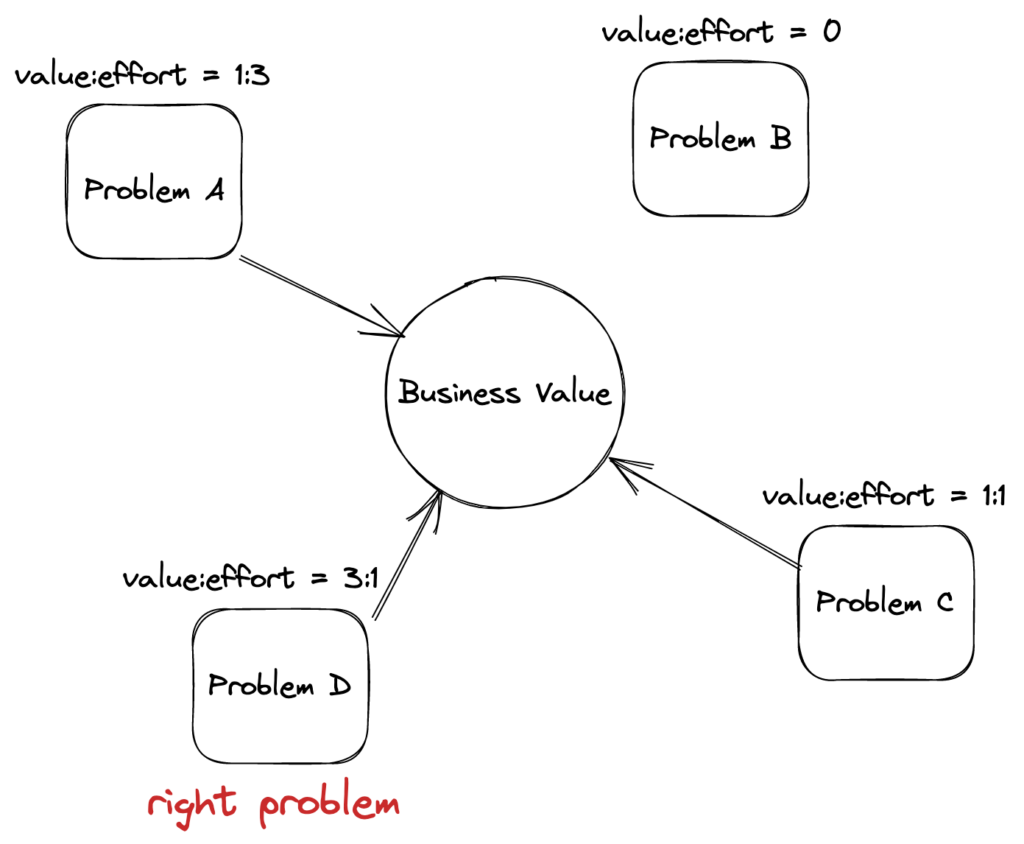
How often do we pause to reflect on the problems we are solving every day? Why do we do them? What business value do they bring? Whether we are in a middle of a project to add a new user flow to a website, migrate to a new tech stack, or create a new data pipeline, we are solving a problem. But is that the right problem to solve in the first place?
Is the new user flow bringing millions of dollars to the company, or is it just a new shiny thing on the website? Is migrating to a new tech stack unblocking productivity for the whole company, or is it targeted to satisfy a handful of engineers because they like the new stack? Is the new data pipeline helping with data-driven decisions to increase revenue, or is it updating a dashboard that nobody will look at?
Engineers are good at solving complex problems. If there is a problem statement within their domain of expertise, they will find the best way to solve that problem. However, only some are eager to go further and ask why we are solving this problem. Some common causes:
- The company hasn’t hired them to ask questions. They are hired to solve the problems that a product manager or an engineering manager is telling them.
- In cultures lacking psychological safety, asking too many questions may be considered a negative behaviour and, in extreme cases, have consequences.
- Decisions are not data-driven but mostly gut feeling. There are no data points to back ideas.
- Leadership doesn’t share big pictures with everyone. There is a lack of clarity between executive decisions and what teams should do. There needs to be more connection between what a team is doing and the business.
Some ways for leaders to help with better decision-making:
- Keep a healthy ratio of curious engineers in the team. Curious engineers are not necessarily should be senior+ level. These engineers should be part of the decision-making early on. They can bring a diverse perspective to the table. The ratio depends on the function of the team, of course.
- Create a safe environment for everyone to ask questions and challenge the direction. In this safe environment, leaders take these questions and challenges with respect.
- Encourage data-driven decision-making. Lead by example. If you make a decision, back it up with data. Encourage the team to challenge it with data as well. It is hard to argue with [high-quality] data.
- Make a connection between what the team is doing and what business value it drives. OKRs is a great framework that connects top-level company goals to individual teams. If followed correctly, each individual can track their contribution to the company’s objectives.
I have a method that I named the CEO Test. I ask my engineers to describe the benefit of the project they are doing to the CEO without using technical jargon. The CEO, of course, has more important things to do than asking each individual to explain their projects. However, this simple yet effective method helps them think beyond the project’s surface. It helps them to connect the project to the business-level value proposition. If they can’t, maybe that is not the right problem to solve.
When a team gets the alignment and with high confidence they can say they are solving the right problem, it is time to move on and execute. While challenging the direction is productive during the planning phase, it becomes disruptive during execution.
An effective leader creates a good balance between execution and eying out for pivoting to solve higher-leverage problems. It is costly for the teams to stop too frequently and challenge the decisions. However, as I wrote in my previous post, Project Properties: Effort, Cost, Value, a project should be re-evaluated when the worth of the promised value declines.
Takeaway
Engineering teams solve complex problems every day. Leaders should create a safe environment for everyone in the team to be part of the decision-making. They should encourage data-driven decisions and lead by example. The data should clearly show a positive correlation between effort and business value. Effective leaders choose the right problem to solve after hearing stakeholders’ concerns and analyzing data, ensuring they contribute to the business’s success.
